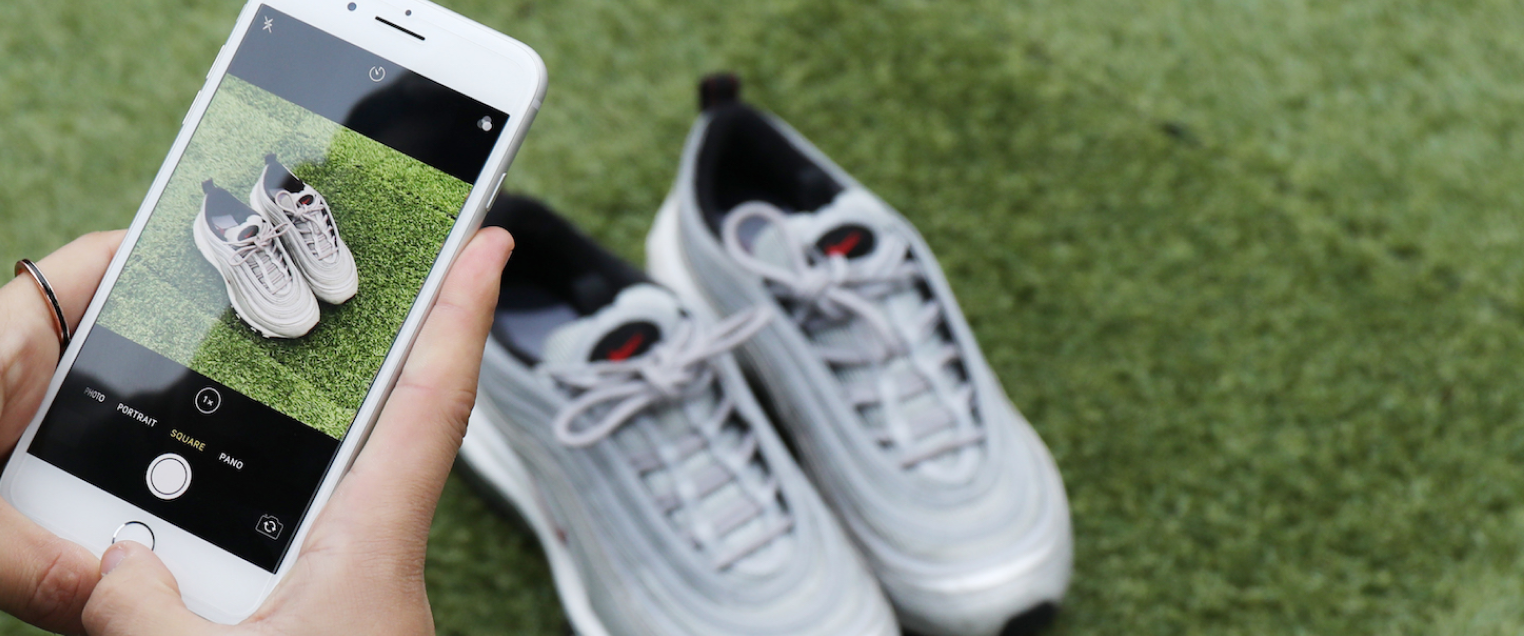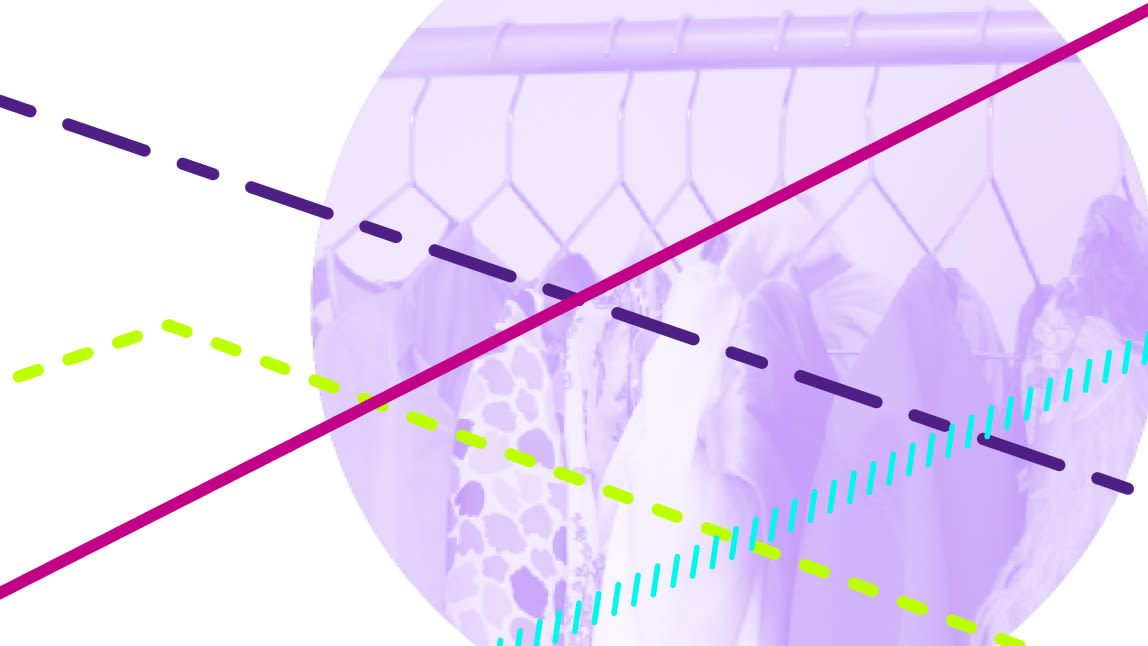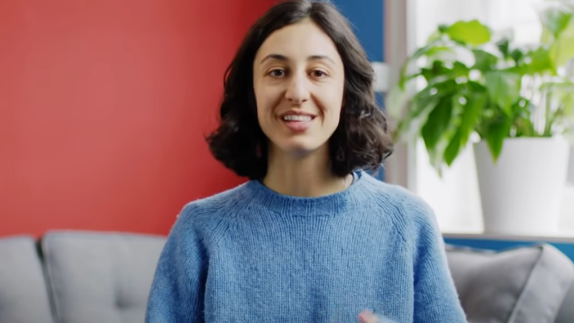
“A few years ago, people wouldn’t necessarily want to admit ‘it is second hand’. Now they proudly say they bought it on Depop – it’s cool and a fashion statement.”
Justine Porterie (Head of Sustainability)
What they do:
Depop is a global peer-to-peer marketplace where users can buy, sell and discover unique items. Originally designed as a social network for creatives to share and sell their products, Depop developed their marketplace with a strong community focus. It is accessed online or via an app.
Upon its launch in 2011, Depop reached one million users in the first year and now has approximately 30 million users across 150 countries. Around 90% of their active users are under 26 and are drawn to the diverse product assortment, sustainability and social aspects.
Depop enables access to second-hand items through a simple and engaging platform where the user experience resembles social media. It is free to list items on the app, Depop takes a 10% commission on sales, and offers protection on all purchases.
Why is it an example of the circular economy?
Depop increases the number of users per product by creating a platform where users can connect with each other to sell and buy items. Users create their profile and list items for sale; buyers can then communicate directly with the seller to purchase items on their profile. All items are posted directly between users.
Many sellers select pieces, using their wardrobes or sourcing used pieces from different places, increasing their resale value by carefully curating their products, customising and reworking the items. Depop’s strong creative community, user experience and accessibility have helped inspire change in GenZ attitudes, normalising and enhancing the demand for second-hand fashion.
What are the benefits?
Depop users benefit from the engaged community and supportive peer mentality prevalent throughout the user experience. Users are empowered to monetise their wardrobes and even start their own businesses through the app. High levels of interaction and the sense of buying from fellow Depop users, increases trust between buyers and sellers.
The success of Depop has created a cultural shift over the last five years. Their users have created a demand and lifestyle around second-hand fashion driven by creative inspiration and bottom-up trends. Since GenZs are very comfortable in generating and sharingsharingThe use of a product by multiple users. It is a practice that retains the highest value of a product by extending its use period. content on social media; Depop's strategy of focusing on this group could create a ripple effect and drive social shifts towards increased clothing use and reduced shopping behaviour. A recent user survey conducted by Depop and Bain and Company in 2020, shows just how much GenZs fashion purchases are influenced by the commitments brands make to social and environmental sustainability. For instance:
60% of Depop users’ purchase decisions are influenced by fashion company commitments on environmental sustainability, specifically, reduced fashion footprint
90% of Depop users have made changes to be more sustainable in their daily lives
75% of Depop Gen Z users buy second-hand in order to reduce consumption
Depop has shown great resilience throughout the pandemic, enhanced by their peer-to-peer setup and no inventory management risks. Their ability to adapt to user-driven trends resulted in an over 100% increase in gross merchandise sales (GMS) during 2020, as people turned to resale apps to unlock cash and declutter.
Depop has also made use of brand and designer partnerships to bring value to their customers, while helping brands to build loyalty with a younger audience through accessible price points and a focus on durabilitydurabilityThe ability of a product, component or material to remain functional and relevant when used as intended..
How it works in detail
Users create a profile and list items for free. They are responsible for the photography, description, pricing and postage of the items.
Users are encouraged to message each other directly to ask questions about sizing, fit, quality etc. Much like social media platforms, they can also follow each other's profiles, ‘like’ and save items.
Purchased items are shipped directly from the seller to the buyer using Depop’s partner courier, Hermes, or through the seller’s chosen shipping method. The cost of shipping can be covered by the buyer or seller, depending on the seller's preference. It’s possible to purchase multiple items from a single seller, which can then be bundled together to reduce postage costs.
Depop takes a 10% transaction fee from the seller’s total revenue through the app. They also cover users with protection against faulty items and delivery issues.
Sellers who spend time and effort curating their garments tend to sell with higher mark-ups. Some users have built successful businesses on the app. One seller, for example, has sold more than GBP 1 million worth of products and now hires a team of staff to support her business.
Depop has built brand loyalty by fostering the uniqueness and creativity of its community. It runs support and mentoring programmes for sellers and young entrepreneurs, and brings together its community through events, digital hubs and physical spaces. In 2019, it partnered with Selfridges to create an in-store space in London.
Next steps
Depop takes a soft marketing approach, tackling the stigma around second-hand clothing, making it cool and continuing to shift users' perceptions, while making it easier to find second-hand items that meet their needs. Such an approach is exemplified in their global campaigns, rooted in showcasing the creative – and 'proudly individual' – minds of Depop’s entrepreneurial community.
“The entire purpose of [these] campaigns is to highlight our community – the different styles, different subcultures and vast creative expressions across our platform. Introducing our sellers in a new light was the inspiration and driving force of this campaign.”
Maria Raga, chief executive officer of Depop.
Depop’s recent growth acceleration during the pandemic has created a need to scale quickly and make sure that the service remains safe and consistent. In recent years, the company has worked to enhance its inventory by partnering with fashion brands, influencers and charities - curating a truly unique repository of reworked, vintage or more responsibly manufactured items that can’t be found anywhere else.
Etsy recently purchased Depop for USD 1.6 billion which further signals trust in the overall fashion resale opportunity. Depop has gained access to Etsy’s operations while Etsy can now grow its exposure to apparel, a billion dollar business already for Etsy, as well as extend its reach with younger consumers.
Depop’s vision for the future is a world where people look for second-hand items first. For Depop, the largest impact potential lies in reusing and remaking clothes. It strives to transform the fashion industry by putting the power in the hands of everyone in the market.
Published 23 November 2021






